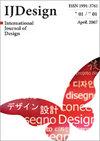Furniture Design as a Means to Support Children's Learning Interest and Motivation
IF 1.9
3区 工程技术
0 ART
引用次数: 0
Abstract
This study aims to analyze the effect of furniture design on children's motivation and interest in learning. The type of research method was comparative descriptive, where fact-finding was conducted, as well as cause and effect relationships, are sought. The subjects of this study were 10 kindergarten schools in Coblong, Bandung. Random sampling was also conducted with a sample size of 50 students. The research analysis used statistics to determine whether there is an influence of predetermined variables, and the research instrument used was a questionnaire for these variables. This study discusses several variables, which are the indicators of assessment to determine the relationship between furniture design and interest in learning, including two variables, namely furniture design (X) and interest, and children's learning motivation (Y). Furniture design variables include color combinations, imaginative furniture, and product quality. Meanwhile, the variables of interest and motivation to learn include children's attitudes in learning activities, persistence in learning, children's learning interests, and children's independence in doing assignments. The variables that we analyzed are the furniture design variable. This variable is intended to find out the influence of the shape of the furniture product and the interest variable. Children's learning motivation is intended to find out how the response or the final result of the product's influence on interest and motivation of children learning.家具设计作为一种支持儿童学习兴趣和动机的手段
本研究旨在分析家具设计对儿童学习动机和兴趣的影响。研究方法的类型是比较描述性的,其中进行了事实调查,以及因果关系,寻求。本研究以万隆市科布隆市10所幼儿园为研究对象。随机抽样50名学生。研究分析采用统计学来确定是否存在预定变量的影响,对这些变量使用的研究工具是问卷调查。本研究讨论了几个变量,这些变量是确定家具设计与学习兴趣关系的评估指标,包括两个变量,即家具设计(X)和兴趣,以及儿童的学习动机(Y)。家具设计变量包括颜色组合、富有想象力的家具和产品质量。同时,学习兴趣和学习动机的变量包括儿童对学习活动的态度、学习的坚持、儿童的学习兴趣和儿童独立完成作业的能力。我们分析的变量是家具设计变量。这个变量是为了找出家具产品的形状和兴趣变量的影响。儿童学习动机是为了了解产品的反应或最终结果对儿童学习兴趣和动机的影响。
本文章由计算机程序翻译,如有差异,请以英文原文为准。
求助全文
约1分钟内获得全文
求助全文
来源期刊

International Journal of Design
ENGINEERING, MULTIDISCIPLINARY-ENGINEERING, MANUFACTURING
CiteScore
4.00
自引率
13.30%
发文量
0
审稿时长
>12 weeks
期刊介绍:
The International Journal of Design invites papers on a wide range of topics, including the following:
-Social-Cultural Aspects of Design
-Globalization and Localization Approaches to Design
-Design Strategy and Management
-Ergonomics and Perceptions in Design
-Design Theories and Methodologies
-Computer Applications in Design
 求助内容:
求助内容: 应助结果提醒方式:
应助结果提醒方式:


